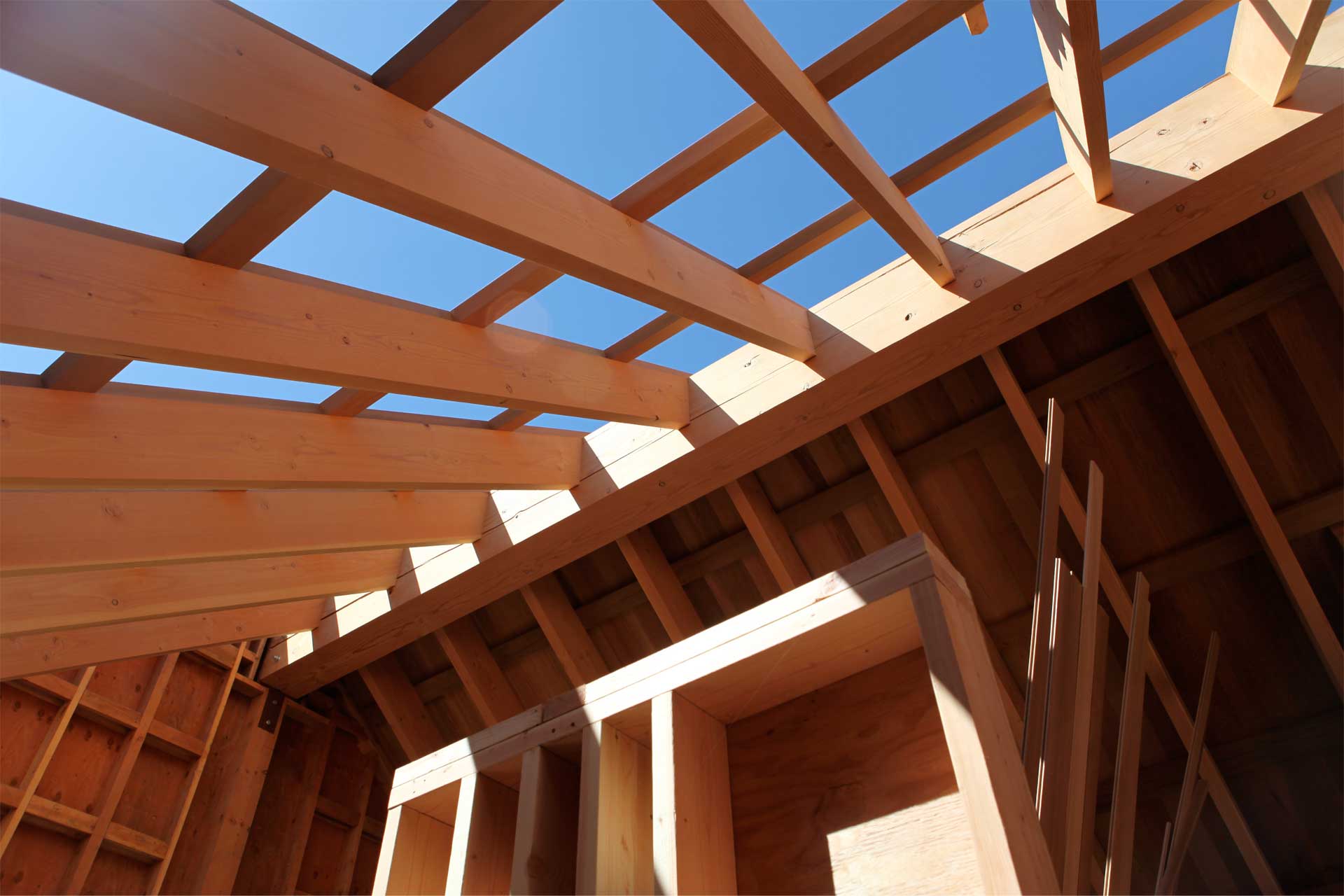CONSTRUCTION
The team effort involved the general contractor working with myriad consultants, sub-contractors and material suppliers to integrate all aspects of the design while balancing constructability, cost, and both long- and short-term protection of the materials and structures.
- Deconstruction—The existing home’s garden room and cabaña were deconstructed by hand. We saved all the redwood and fir lumber for reuse in the new home, and recycled the rest. We achieved over 90% recycling rate for the deconstruction.
- Excavation—Balanced cut and fill, no importing or exporting of dirt.
- Concrete—We chose a pier foundation instead of a mat slab, greatly reducing both the carbon footprint and cost. Our concrete mixes ranges from 50 to 70% slag (a by-product of steel manufacturing). The concrete subcontractor, Solid Concrete used a large percentage of recycled lumber for the form work.
- Waterproofing—We are using the greenest materials available (see product list).
- Wood Products—We are using only FSC-certified and reclaimed lumber throughout the project. For structural framing – three framing materials were reviewed: S-dry, KD (kiln-dried) and laminated veneer lumber. FSC-certified, formaldehyde free KD wood was used, along with a few glue-laminated (“glulam”) beams with low-urea-formaldehyde adhesives.
- Windows—Highly energy-efficient, durable, combination of frames by Roeder window (which has a green manufacturing plant in Germany and uses FSC certified Eucalyptus) with Serious Windows manufactured by Serious Materials.
- Roofing—Young Sheet Metal installed Follansbee TCS II standing-seam metal roofing, a 75- to 100-year roof. It consists of 75% recycled steel, 100% recyclable upon deconstruction.
- Plumbing—The integrated plumbing system includes radiant floor heating and cooling, ground source geothermal, and a fire-sprinkler system using a combination of cross linked polyethylene (PEX) and HDPE piping. We avoided using any ABS and PVC plastic pipe and very little copper, only where fittings were unavailable in HDPE or PEX.
- Insulation—JM Spider was chosen to avoid halogenated flame-retardants, provide ultra-high insulating quality, and allow us to spray to any thickness up to 16” (more than other brands allow) in the exterior walls and in the roof assembly, which is topped off with polyisocyanurate-based Hunter panels. In addition to its energy efficiency attributes, JM Spider is formaldehyde free and does not off-gas any other VOCs. In addition, it is made primarily from recycled glass and sand, a rapidly renewable resource.
- Finish—Most of the wood siding and the interior paneling was left in a natural state, using no paint or stain. We used a 100% natural Tung Oil in areas where absolutely necessary (primarily areas subject to moisture) for durability.
- Paving—We used a highly sustainable, natural pine-resin and decomposed granite material for the driveway.
- Jobsite Recycling—Our goal was to minimize waste production during the construction process and to first reduce, then reuse, recycle, and donate as much scrap and leftover material as possible. We exceeded our goal and achieved 98% recycling.
- Commitment to Sustainability—All suppliers, contractors and vendors were required to read this Guiding Themes and Green goals document and decide if they wanted to commit to the set of values established for the home prior to contract negotiation.
- The Project

